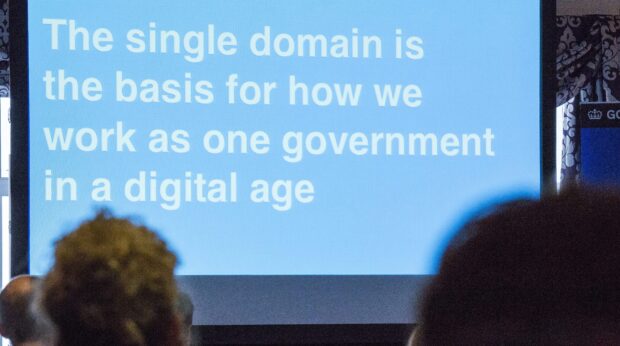I’m Rob and I work on website transition at the Government Digital Service (GDS). I’m part of a small, new team tasked with closing old or out-of-date government websites. Where appropriate, the transition content team will also be creating new content that meets users’ needs on GOV.UK.
We’ve done this before
To those who have worked in digital government for a few years, this may seem a bit like Groundhog Day. A while back GDS led a programme to reduce the number of centrally funded government websites. In a relatively short space of time over 600 government websites closed and content that met users’ needs moved to GOV.UK. This was a herculean effort by departments and agencies, working collaboratively with GDS that supported GOV.UK as the single place to go for government content and services.

Job done?
Not quite. The Standards Assurance team and spend controls introduced centrally at GDS and locally in departments do a brilliant job to stop new websites popping up - and save lots of tax payer’s money. But as there are still many legacy websites out there, we will focus on these older sites that have been around for a while and are out of date.
All departments provide quarterly updates on the number of open websites. At the last count there were 269 government websites. But I have a sneaky suspicion there may be a few more lurking out there.
Many older websites were out of scope for the original transition. Some of these are now in a position to move content to GOV.UK. Some websites have come to the end of their useful life and can be retired. Some are campaigns that could be re-purposed for the new GOV.UK campaign platform.
Working with Public Health England
The new Transition team started by looking at Public Health England’s (PHE) legacy websites. Almost overnight, PHE inherited hundreds of websites when various public health teams became one organisation in 2012.
They all have a website and some of them do similar things. Some sites don’t meet a clear user need and some are on unstable platforms. PHE has probably already closed more websites than any other government organisation. But there are still more.
As part of government we need to deliver value to citizens by providing easy-to-use services and information that meets their needs. Each additional website that a user has to find and read through can lead to wasted effort and can cause confusion and frustration.
Helping teams work together
We’ve had a difficult start. Some teams feel very strongly about their websites and are reluctant to let them go. I understand this. A website is often a shop window for the work a team does.
Something that's struck me is how passionate these teams are about meeting users’ needs. I see it as our job to help teams focus on who their users are and what it is they need from government. Sometimes this means designing new content on GOV.UK. Sometimes it means archiving content that isn't needed anymore. This can be a tough sell.
With the help of the PHE digital team, we will for the first time, bring together several different teams that produce obesity content for government. These teams currently produce content independently of each other. Later this month, they will work together to review existing content on obesity and will design new ways of working to ensure they work collaboratively when creating new content on GOV.UK.
This sounds obvious and is how government should work. But it doesn’t always work this way. It's a problem across government. At GDS we need to be better at helping teams work together and break down departmental silos.
Bring out your dead (websites)
Amanda is the transition content lead and will be blogging later about our roadmap for 2017 to 2018. In the meantime, if you're responsible for a government website that you want to close and move content to GOV.UK, then speak to the GOV.UK Policy and Engagement team on govuk-enquiries@digital.cabinet-office.gov.uk
Or if you want some advice on retiring a site that is no longer needed, then we can help with that too.
Rob is a policy and engagement manager on GOV.UK. You can follow him on Twitter.
 The GOV.UK app went live in public beta in July 2025. Find out what’s been happening, and what’s coming next,
The GOV.UK app went live in public beta in July 2025. Find out what’s been happening, and what’s coming next,